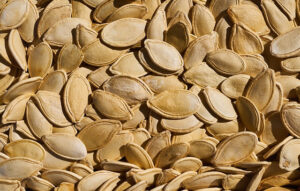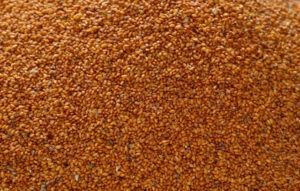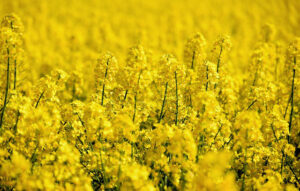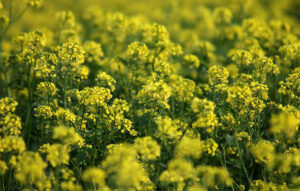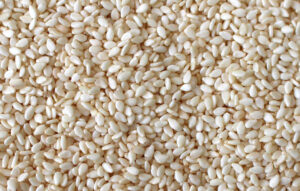GrainProTrade – Wholesale rapeseed at producer prices
Our company GrainProTrade supplies rapeseed directly from farmers in the Ukraine on favorable terms. Our rapeseed grains with an oil content of more than 45%, a purity of 98% and a moisture content of no more than 12% are excellent for the production of high-quality rapeseed oil.
You can safely buy rapeseed from us without worrying about the quality, because all our products are consciously selected by our QM employees in Ukraine and thus meet the highest standards, which guarantees the expected quality of the goods. Besides the high standard, the products are sold at an affordable wholesale price. The conditions for the sale of rapeseed can be specified at any time in writing or by telephone with the manager. Our team provides our customers with the in Big Bag packed rapeseed grains ordered by truck within 5 working days.
Current prices for rapeseed:
- rape for DAP Price from €460/ton including freight costs.
The main advantages of the ZusaWorking with our company:
- the high level of professionalism of our entire team, which ensures problem-free delivery of high-quality rapeseed in the shortest possible time;
- an appropriate price level, since we work directly with rapeseed producers in the Ukraine, e.gusamen work;
- convenient delivery straight to you.
Contact our managers on the website or by phone. We offer high quality rapeseed grains at an optimal price!

rapeseed field

rapeseed blossom
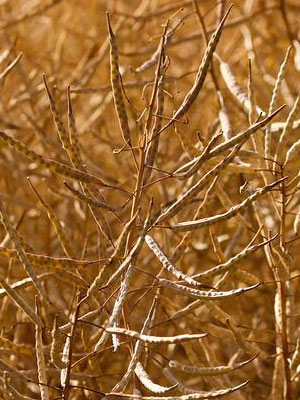
Rapeseeds

rape grains

Rapeseed oil
All about rap
Rapeseed contains oils of 40-45%, protein 18-22% (the proteins are in the amino acid zusaBalanced composition, 5% of the total amino acids are sulphur-containing amino acids), dietary fiber from 6-7%, phospholipids from 0,2-1,2%, which are characterized by an increased content of non-hydrated forms. Rapeseed is characterized by a high content of chlorophyll pigments (10-150 mg / kg). Depending on the variety, the content of thioglycosides (glycosinolates) in the seeds varies between 0,5 and 6,0% (air heater). Through the fatty acidusaThe characteristic of traditional varieties, as mentioned above, is a high content of erucic acid (up to 50%), in new varieties it is reduced to 0 traces.
Canola oil is a rich source of essential polyunsaturated acids – linoleic acid (21%) and linolenic acid (up to 9%).
Spring oilseed rape belongs to the cruciferous family (Cruciferae or Brassicaceae). Spring rape is a mixture of rape and cabbage. It is created by breeding flowering species from winter oilseed rape, therefore it has a great morphological and physiological similarity with winter oilseed rape. Spring oilseed rape has a strongly developed core root, which reaches a diameter of 1-2 centimeters in the upper part and penetrates deep (up to two or more meters) into the soil, but is very sensitive to soil and subsoil compaction.
Strong lateral roots deviate from the main root. The development of thin roots and root hairs is weak, which is due to the low digestibility of nutrients. In contrast to winter, spring oilseed rape does not form a leaf rosette, but immediately enters the stretching phase. The plant gives only one trunk, which can reach a height of 80 to 150 centimeters. Branching takes place only in the upper part after the beginning of flowering and depends on the supply of nutrients to the plants and the feeding area. The lower leaves are petiole, lirovidno-pinnate, along the petiole and edges are covered with bristly hairs. The upper leaves are oblong-lanceolate with an extended base enclosing half a stem.
The inflorescence is a long, loose brush that fades from bottom to top. The flowers are yellow, the buds are higher than the open flowers. The flowering time of a single flower is three days. Because the side shoots are distant from the main stem in their development, the plants take 3-5 weeks to flower, depending on the weather. About 70% of the flowers are self-pollinated and 30% cross-fertilized by insects (mainly bees) and wind. The fruit is a smooth or slightly stiff pod 5-10 centimeters long with a thin, short spout. The pod is divided in the middle by a film, from which up to 20 seeds are formed on both sides.
The seeds are round or spherical, bluish-black or black-brown.
The mass of a thousand seeds ranges from 3 to 5 grams. The germination time of seeds is 4-5 days. Spring oilseed rape, like winter, is a plant of a long day. For a good generative development, it requires a little cold in its initial phase, so an early sowing period is necessary. Modern varieties have a growing season of 90-100 days.
Due to the shorter vegetation period compared to winter oilseed rape, the development of a single plant in summer oilseed rape is weaker, the yield is lower and the oil content in the seeds is 2-4% lower. Experiments carried out in central Germany have shown that the yield of spring oilseed rape accounts for about 50 to 60% of the winter yield.
In Eastern Europe, under more continental conditions, the yield ratio of summer and winter oilseed rape is usually better.
soil requirements
Rapeseed is grown on turf-podsoli-loamy and loamy soils, underlaid with moraine loam, less often with flat sand. Canola plants can be placed on reclaimed land and peat bogs. Sand and loam-poor soils covered with sand are not very suitable, especially for the production of seeds. Light, sandy soils that quickly lose moisture, as well as soils with a close occurrence of groundwater and an acidic reaction of the medium are not suitable. In areas with low pH in the soil environment, spring oilseed rape can be affected by a kilo.
Optimal agrochemical indicators for the soil for the production of seeds: humus content - not lower than 2,0%; mobile phosphorus and exchange of potassium – not less than 150 mg / kg of soil; pH – 5,8-6,5.
The selection of the predecessors
The best precursor for rapeseed is root crops to which organic fertilizers have been added. Good predecessors are clover, lupins, bean-cereal mixtures, silo, propashnye and winter cereals. Rapeseed, grown in the crop rotation between two crops, enriches the soil with organic residues and prevents the development of root rot in these crops, increasing their yield by 17-34%.
It is allowed to sow rape on plowed dead winter rape. Sowing rape in weak winter rape is impractical due to uneven ripening and significant damage from pests and diseases.
It is not recommended to return rape to its original place earlier than 4 years due to the possible accumulation of pathogens and pests. When changing crops in crop rotation, especially on heavy soils, it is necessary to take into account the time between planting rape, cabbage and sugar beets, where the remaining rape can germinate for a long time.
tillage
Tillage under rape should be aimed at maximum cleaning of the field from weed vegetation and alignment. On connected soils, oilseed rape responds positively to the implementation of a deep drizzle – up to 40 centimeters, the crop yield in a dry year decreases by 20-30% on spring oilseed rape.
fertilization
When growing rapeseed, organic fertilizers are placed under the previous crop. Manure can be applied directly under the spring rape to cover only 50% of the nitrogen requirement. Doses of mineral fertilizers are calculated depending on soil security and the size of the planned crop. Nitrogen fertilizers are introduced under the presowing crops. With a nitrogen dose of more than 150 kg/hectare, they are applied in two doses: 3/4 dose – before sowing in the form of CAS, urea or ammonium nitrate (depending on the pH of the soil), the remaining amount – during the stalk period before the start of budding in the form of ammonium nitrate, urea, CAS when diluted with water in a ratio of at least 1:3. When using CAS, it is necessary to strictly observe the concentration of the solution, not to carry out processing during the flowering period of spring oilseed rape.
Phosphorus and potassium fertilizers are introduced:
– on heavy soils – plowing in full dose in autumn;
– for the lungs – 2/3 doses of potassium – in the fall, the rest in the spring, e.gusammen with phosphorus fertilizers for pre-sowing cultivation.
Fertilizers are introduced on fine-grained peat bogs:
– nitrogen – 50-60 kilograms / hectare,
– phosphorus – 40-60 kilograms / hectare,
– potassium – 100-140 kilograms / hectare.
Be sure to use fertilizers containing boron and copper, or dress seeds with these trace elements. Effective use of boron copper oreusacommendations.
Rapeseed is characterized by an increased requirement for soil safety due to trace elements (boron, zinc, molybdenum, manganese). In case of low security, at least two of the most deficient trace elements are introduced into the fertilizer according to the cartogram. Molybdenum is not introduced on produced soils. Instead of trace element salts, liquid complexes can be used.
Non-root feeding with boron during the budding period is mandatory. Use boric acid - 200-250 grams/hectare and others. Non-root post-fertilization of spring oilseed rape with trace elements (before flowering) can be combined with nitrogen or pesticide treatments. The working fluid consumption is 250-300 liters/hectare of water.
Urea solutions and liquid complex fertilizers are used e.gusammen used with crop protection products if the processing time is the same.
Spring oilseed rape responds positively to the introduction of sulfur. Sources of sulfur are fertilizers: phosphogypsum (18-21% sulfur), simple superphosphate (9-13%), ammonium sulfate (23-24%), potassium sulfate (17-18% sulfur). Sulfur is introduced as the main fertilizer.
High quality “canol” oilseed rape cannot be fed with ammonium sulphate. With a planned yield of 30 centners/hectare, 30 to 40 kilograms/hectare of sulfur are required.
Liming of acidic soils is carried out directly under the previous crop or after harvest under autumn plowing over the stubble.
Preparing the seeds for sowing
Rapeseeds are etched during storage, but no later than 2 weeks before sowing. Seed dressing is carried out with fungicidal agents to protect rape sprouts from diseases or insecticidal fungicidal effects from pests and diseases.
Etched seeds should be evenly covered with the preparation, the moisture of the seeds should not exceed 10-12%.
sowing
Rape is sown early in mature, warmed and not over-packed soil. The optimal sowing time is the sowing of early spring grain (spring barley). On light mineral soils in the southern regions of the republic, sowing is carried out when the soil warms up to 5 °C in the first-second decade of April; in the central areas - in the second - third decade of April, in the northern regions - in late April - early May. Sowing rape on light mineral soils must be completed by the end of April, on heavy and peat soils 10 days later. The duration of sowing when the soil is ripe is no more than 5 days. Conditioned seeds are used for sowing.
It is not allowed to sow seeds, very small, underdeveloped, with the presence of quarantine weeds, pests and diseases.
The seed rate depends on the soil culture and the biological characteristics of the variety:
– for low-growing varieties it is 1,5-1,8, for high-growing varieties 1,3-1,7 million seeds/hectare;
– in seeds and in the propagation of promising varieties 1,0–1,5 million seeds/hectare;
– The sowing rate can be reduced on fertile and well-cultivated soils, on less fertile and late sowing times, in drought-prone areas the upper limit of sowing is used.
The optimum density of plants during the germination period should be 90-140 pieces/m2, depending on soil fertility and the level of nitrogen supply, which corresponds to the sowing rate of 6-8 kg/hectare. Compliance with the norms of sowing control work check passage: in the seeder fall accurately weighed amount of seeds, measure the seeded area and from the difference between the weighted and the rest of the seeds count at the seeder the actual sowing amount. The method of sowing is a solid soldier with a row spacing of 12,5-15 centimeters. Combined units with active working bodies, as well as pneumatic seed drills are used. Depth of sowing:
– on e.gusammhanging floors - 1,0-1,5 centimeters;
– clay – 1,5-2,0 centimeters;
– on lighter soils – 2,0 to 2,5 centimeters.
Control of pests and diseases
Spring oilseed rape is damaged by the same diseases as winter, but as a result of a short growing season, they don't damage it as much. Cruciferous plants (germination phase), oilseed rape plants, latent skin, oilseed rape sawmills and aphids are the most significant damage among the pests for spring oilseed rape. To combat pests, insecticides are used, which are entered in the State Register of Protective Means (Pesticides) and Fertilizers Allowed for Use in the Republic of Belarus.
If no anti-blossoming treatment is applied to spring oilseed rape, crop losses are 30-70%. The plants are processed with sprayers – Berthud Boxer, Rau, Rall, Jecto. The amount of working fluid is 200-300 liters / hectare, when changing pesticides, it is necessary to wash the device. The specified flow rate of the working fluid is not allowed to change, the sprayers and filters are checked and cleaned regularly during the shift.
Chemical processing of rape during the flowering period is carried out after the end of the bee summer. In the crops of spring oilseed rape, diseases are most common: alternariosis, peronosporosis, black leg, sclerotiniosis, gray rot and Fusahuge. Against them, it is recommended to use fungicides registered in the State Register of Preservatives and Fertilizers.
harvest
To reduce the loss of rapeseed oil seeds during ripening and during harvest, film-forming preparations are sprayed 3-4 weeks before harvest: new Film-17 with a consumption of 0,7–1,0 liters / hectare, Gripil – 1,0, 1,3–4,1 liters/hectare, which prevents pod cracking and promotes crop preservation (9,6–18,6 hundredweight/hectare or 36,1–XNUMX%).
Indications of an optimal harvest time are the coloring and moisture of the seeds in the pod or technological ripening (the chlorophyll content is less than 25 milligrams / kilogram of the seeds) with a seed moisture content of 15% or less and the ripening of 70% of the pods.
Separate cleaning is used in case of excessive clogging with perennial weeds, uneven ripening, pest control and diseases. Seeds that are harvested separately do not require additional drying and can be transported immediately from the field to the delivery points. Separate harvesting would be optimal – stalks of rape acquire a dark yellow color, the lower leaves have fallen off, the lower pods of the branches are lemon-yellow, the seeds are brown or black, do not break into two halves when crushed, the humidity of the seeds in the pods – 25 -30%. The height of the cut is maximum high - 30-35 centimeters, but not higher than the first side branch. The rollers dry up for 5-7 days, the seeds ripen in pods, and their moisture drops to 10-12%. The rolls are picked up and shredded with combine harvesters equipped with pickers.
Harvesting is started directly by harvesting with the full maturation of the seeds on clean, non-lying and evenly ripened plants. The optimal time for harvesting is the main stem yellow-green, the upper and lower branches are yellow, there are no leaves. The color of the pods on the upper branches is yellow, the seeds have acquired a characteristic dark color, their moisture does not exceed 18-20%. Full maturation of seeds occurs 10-15 days after the onset of technical maturity. Plant drying is performed to dry oilseed rape plants at the root to ensure faster and more even ripening of seeds, as well as to kill wheatgrass and other weeds during their intensive growth phase. Direct mowing requires the combine to be shifted back and forth a little to reduce the number of destructible pods, to prevent the beveled stems from falling and being lost in the course of the combine. It is mandatory to use a rap table. The rotational speed of the chainsaw must be equal to or slightly faster than the forward speed of the sweeper, but not more than 1,05 times. The height of cut when mowing directly is 30-40% of the average plant height, but not higher than the first lateral branch.
Which agricultural oil crop can be considered the most common? Someone will name a sunflower - and will be wrong. The correct answer is rapeseed.
What is the reason? In the profitability, waste and useful properties of rapeseed used in agriculture.
Here's what they make out of canola:
– From seeds – used in cooking (natural foods and honey), cosmetics, medicine, soap making, as well as in the manufacture of lubricants and oil Biofuels used in the textile industry.
– From the grist – animal feed. The feed is balanced and contains all the trace elements and vitamins needed for rapid growth and weight gain in cattle and other livestock.
– Animal feed is also made from the green mass, which is used in early spring. By the way, mowing the plant stimulates its rapid growth and provides a high yield - this is a unique feature of this oil culture.
It turns out that the benefit of processing rapeseed into oil is high - there is no waste, modern technologies allow everything to be used. And that's a key factor forcing farmers around the world to grow canola on an industrial scale, while scientists develop new hybrids and improve existing varieties year after year.



